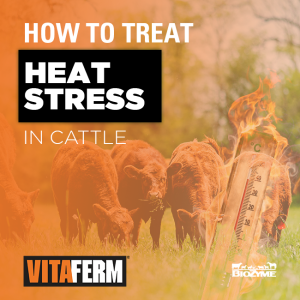
It’s time to start thinking about turning your cattle out to summer grass. Regardless if you own or rent your pasture, it is important to make sure you are getting the most efficient use of your resources.
The first thing to consider is the stocking rate for the specific area you live. Stocking rate, simply stated, is the number of acres per animal unit (cow-calf pair or steer) it takes to sustain and grow and animal. For example, in the more lush part of the Midwest like Missouri or Illinois, stocking rate might be 3-4 Animals per Unit per Month (AUM); however, in the more arid climates of New Mexico, the stocking rate might be 30 AUM.
Kevin Glaubius, Director of Nutrition and Technical Sales for BioZyme® Inc., says it is important to remember there is no such thing as an average pasture. And, he adds that producers must remember stocking rate and stocking density are two different terms that are not the same.
Whereas, stocking rate is the number of acres per animal unit; stocking density is the amount of weight on the pastureland at a specific time, and is a management term used in more controlled grazing situations.
Glaubius said that there are a variety of ways to increase the usage of your pasture, to increase forage utilization and make it more sustainable. He suggests cross-fencing larger areas into smaller paddocks or areas to use rotational grazing. Add a water system to the pasture to give the cattle access to good, clean water to help increase the calf’s performance. And finally, use the shade from any timber during the longer, hotter days of summer to keep the cattle cooler.
Susan Day, Ph.D., is a BioZyme Nutritionist who also owns and manages a dairy with her husband in Southwest Missouri. She also recommends a managed grazing system for maximum forage utilization.
“Running cows continually – on one or two large paddocks with infrequent rotation – is less efficient and cultivates less desirable forage,” Day said.
Rotational grazing is a good way to keep the forages growing more evenly. Cattle waste is distributed more evenly in smaller paddocks, therefore fertilizing the soil more evenly resulting in more even plant growth sooner. If the cattle are grazed in a small area for a shorter time, the forages have more time to rejuvenate, making the stocking density greater.
According to Day, using rotational grazing is similar to paying oneself nearly $300 in value from increased gains, more efficient use of their pasture utilization, and feeding less hay. The labor is is slightly more intensive, and could take 15-30 minutes to cross fence a paddock, all depending on herd size and pasture size. The intake from the higher-quality grasses is more intense and the quality of the grass stays better while moving cattle from paddock to paddock versus continually grazing one large area.
Another way to increase the forage utilization of the pasture is to provide the cattle with a supplement like a VitaFerm® mineral with the Amaferm® advantage. Amaferm®️ is a prebiotic designed to enhance digestibility by amplifying the nutrient supply for maximum performance. It is research-proven to increase intake, digestion and absorption. Amaferm and grazing management are synergistic.
Glaubius said that the Amaferm can help cattle sustain their body weight. Cows should wean off heavier calves while having a more ideal body condition score. Amaferm could potentially extend the time of grazing in a conventional grazing system where cows are not rotated, by 10-14 days per season. He adds that feeding Amaferm in a drought area is vital to enhance the nutritional value of lower quality and quantity of forages.
Both Day and Glaubius agree that producers should educate themselves with the resources available to them in their states. Attend a grazing school, and research programs that are available to help offset the cost of cross fencing to utilize rotational grazing to its fullest potential.
Rotational grazing and VitaFerm supplementation should increase forage production and forage utilization.



